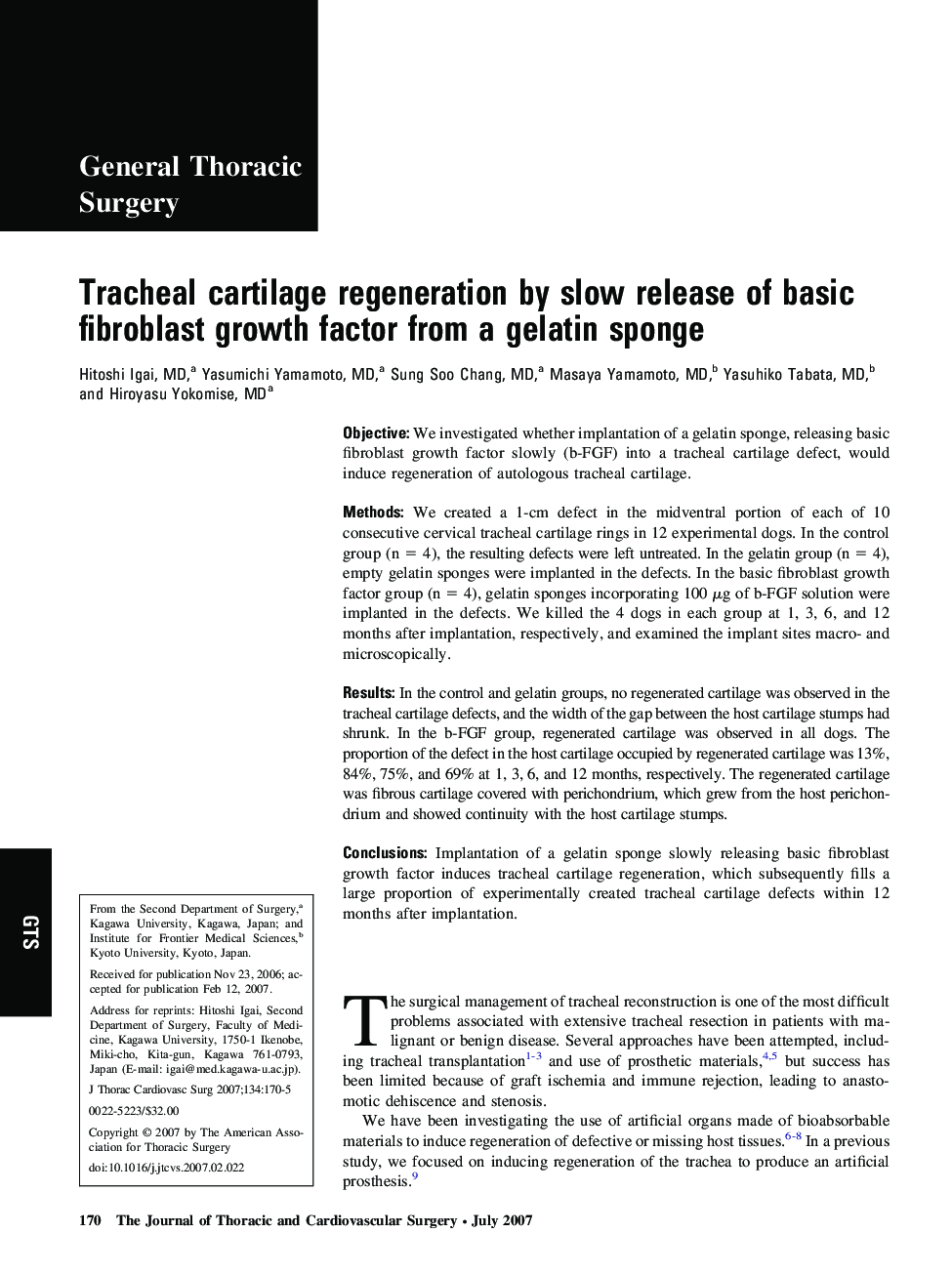| Article ID | Journal | Published Year | Pages | File Type |
|---|---|---|---|---|
| 2983466 | The Journal of Thoracic and Cardiovascular Surgery | 2007 | 6 Pages |
ObjectiveWe investigated whether implantation of a gelatin sponge, releasing basic fibroblast growth factor slowly (b-FGF) into a tracheal cartilage defect, would induce regeneration of autologous tracheal cartilage.MethodsWe created a 1-cm defect in the midventral portion of each of 10 consecutive cervical tracheal cartilage rings in 12 experimental dogs. In the control group (n = 4), the resulting defects were left untreated. In the gelatin group (n = 4), empty gelatin sponges were implanted in the defects. In the basic fibroblast growth factor group (n = 4), gelatin sponges incorporating 100 μg of b-FGF solution were implanted in the defects. We killed the 4 dogs in each group at 1, 3, 6, and 12 months after implantation, respectively, and examined the implant sites macro- and microscopically.ResultsIn the control and gelatin groups, no regenerated cartilage was observed in the tracheal cartilage defects, and the width of the gap between the host cartilage stumps had shrunk. In the b-FGF group, regenerated cartilage was observed in all dogs. The proportion of the defect in the host cartilage occupied by regenerated cartilage was 13%, 84%, 75%, and 69% at 1, 3, 6, and 12 months, respectively. The regenerated cartilage was fibrous cartilage covered with perichondrium, which grew from the host perichondrium and showed continuity with the host cartilage stumps.ConclusionsImplantation of a gelatin sponge slowly releasing basic fibroblast growth factor induces tracheal cartilage regeneration, which subsequently fills a large proportion of experimentally created tracheal cartilage defects within 12 months after implantation.
